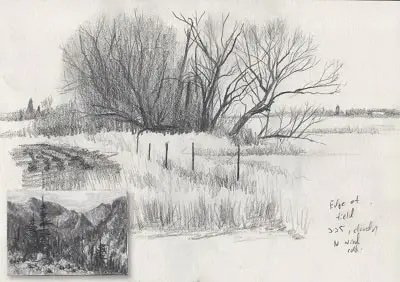
Smudges in Your Sketchbook-Keep Your Drawings From Smearing
After over two decades of sketching and filling piles of sketchbooks, I've dealt with many smudged drawings. So how do you keep drawings in your sketchbook from smudging and smearing?
The most effective way to prevent smudges is to spray your drawings with a fixative spray once they are completed. Other methods include hairspray, using a hardbound sketchbook, drawing with H-grade pencils or ink, placing wax paper between each page, and placing rubber bands around your sketchbook.
Each of these methods has it's pros and cons. So let's discuss each one of these in detail.
Prevent Sketchbook Smudging with Fixative Spray
In my opinion, this is probably the best way to solve the problem. Spraying the drawing will reduce smudges significantly. It's one of the quickest of all the methods listed. You can draw with any medium you like, and keep all your sketches in your sketchbook.
There are many fixative sprays on the market. Some allow you to rework the drawing to a certain degree, but once you apply fixative, erasing is pretty much out of the picture (no pun intended). There are others that are meant to be a final protective coating, and there are fixatives that are specific to certain mediums (such as pastel).
If you do a lot of sketching in the field as I do, then this is not always a viable solution. Hiking into the woods with an 11oz can of spray is not very practical. One solution is to bring along a can of fixative and keep it in your car, then spray your drawing when you return. Just be careful about keeping an aerosol can in your car during hot weather. Read the label for warnings.
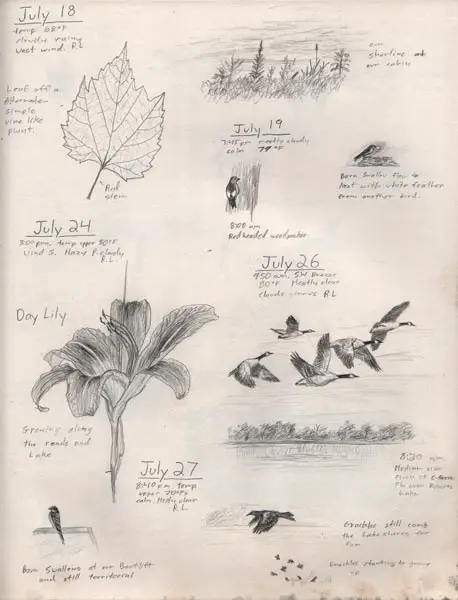
Preserving Drawings with Hairspray
First of all I must admit that I have never done this, but from what I've read it actually works. It can also be a very cost-effective method as you can pick up a can of Aqua Net for around $3 bucks. The cheapest fixative spray will could you almost double. And if you grew up in the '80s as I did, the Aqua Net may carry a bit of nostalgia.
However, if you really like your sketches and want to keep them around for many years, then I would avoid using hairspray. Word is that it can yellow your drawings over time. After all, they didn't make that stuff to preserve mullets for decades (though some people have preserved their mullets for decades). And some hairsprays may contain chemicals that would do who knows what to your drawings.
But if you are just starting out, on a budget, and don't care about your drawings over the long haul, hairspray may be the way to go. It may also help you finally get rid of that can of Aqua Net that has been lingering in the back of your bathroom cabinet since 1986.
See the types of pencils, charcoal, and paper I use on the Drawing and Sketching Resources Page.
Using a Hardbound Sketchbook
There are basically two types of sketchbooks or pads on the market, spiral-bound and hardbound. There is more freedom of movement between the pages with a spiral-bound sketchpad and therefore more smudging. You should only use a spiral-bound pad if you intend to remove the sketch or drawing as soon as it's completed.
A hardbound sketchbook allows less freedom of movement between the pages, so there is less chance of smudging. Please note that I said less chance, not no chance. Sketches in hardbound sketchbooks can smudge also, especially if you are hard on your books and you loosen or break the binding.
Hardbound sketchbooks also don't seem to have the variety of paper types that spiral-bound sketchpads offer. But if you want to keep all your sketches in a journal-type form, hardbound is the way to go.
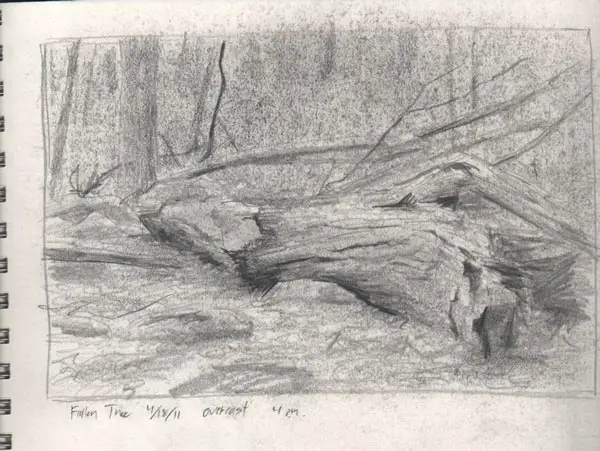
Drawing with H-Grady Pencils
Using H-grade pencils (hard pencils with more clay content) can help reduce smudges. I go into more detail on different pencil grades in my article The Lightest and Darkest Drawing Pencils-And How to Use Them.
While they can still smudge, H-grade pencils smudge a lot less than B-grade pencils and are a night and day difference from charcoal or other very soft mediums. They provide a nice thin line and a long-lasting fine point which doesn't require constant sharpening.
Of course, you will be much more limited in your value range, especially if sketching subjects that have a greater tonal range. But if you want to jot down some basic lines and ideas and not have to worry about making an immediate mess, H-grade may be the way to go.
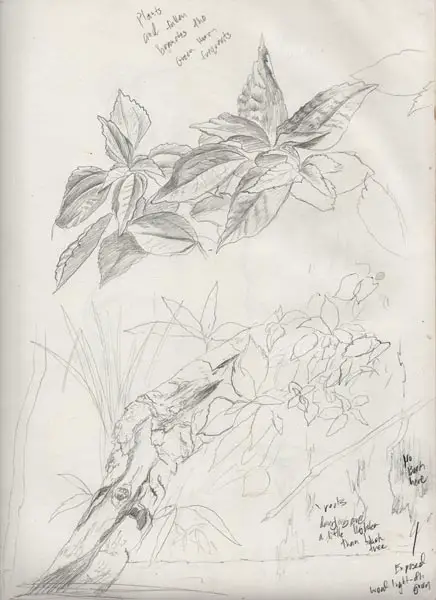
Using Ink to Prevent Smudges
For preventing smudges while still getting fine lines, ink is a step up from H-grade pencils. Once it dries, especially when using permanent ink, it will not smudge in the least. There is no need for fixative sprays, and you can use pads or hardbound sketchbooks. There is also no sharpening required to maintain a fine point. Markers are another alternative, though they can bleed through some papers.
Of course, the obvious challenge is that you cannot erase ink. But this may not be a drawback, depending on how you look at it. I actually spent a year sketching strictly with a ballpoint pen. I wanted to challenge myself with not being able to erase, which forced me to carefully observe my subject matter before ever putting pen to paper.
On a side note, ballpoint pen is the sketching medium of choice for master wildlife artist Robert Bateman, and many old sketchbooks from the 19th century and prior were done in ink.
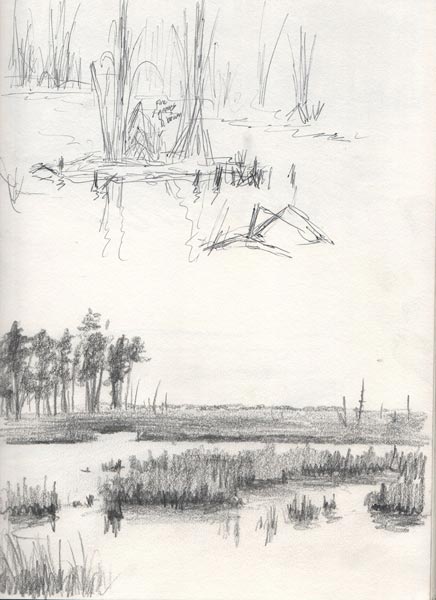
Prevent Smudging with Wax Paper
This is another one I admit I have never really tried, but some people swear by it. The idea is to cut sheets of wax paper the same size as your sketchbook pages, attach the paper to one side of the page with tape (you can wrap the tape around the backside of the page) and the paper will prevent smudging.
This may work well for an indoor-only sketchbook, but having a bunch of extra sheets of wax paper flopping around when I'm outside sketching doesn't seem to practical. I also wouldn't want to spend all that time cutting wax paper. However this is my personal preference. This method may work wonderfully for other people who are not as hectic or mobile as I am.
Securing Your Sketchbook with Rubber Bands
To prevent your sketchbook from slightly rubbing back and forth, you can purchase some large rubber bands and place them around your sketchbook to keep the pages more tightly bound together. Rubber bands are very portable and you can carry along some extras just in case you lose one.
Some sketchbooks come with a type of rubber band or binding that goes vertically around the sketchbook to keep it closed and firmly bound together. If your sketchbook sees a lot of action as mine have, this may not completely prevent smudges, especially if you use a soft medium such as charcoal, but it certainly can help.
Other Ideas for Preventing Smudging
Removing Your Drawing and/or Framing It
This one is fairly obvious but it's worth mentioning. If you have a sketch you really like, remove it from your sketchbook and set it aside or frame it. I would still spray it with fixative since it could still get smudged even outside of a sketchbook.
Sketch Only On One Side of Each Sheet
I've tried sketching on both sides of each sheet of paper in an effort to prevent waste. While this works fine for ink, it can be a disaster if using pencil, especially if your sketches have a lot of tone.
Your Technique
If your sketches have a lot of shading and tone, they are a lot more prone to smudges than if you just use lines with a harder pencil. Many of my line-only sketches barely smudge at all, even when using a spiral-bound sketchpad.
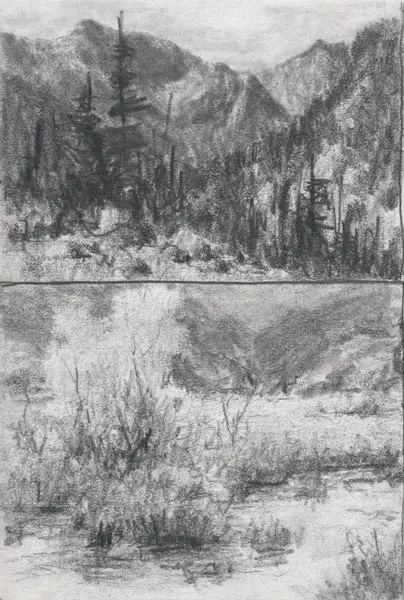
Don't Smudge Your Drawings While Drawing
I was actually surprised to see this one in my research since I consider proper drawing technique to be distinct from preserving a completed sketch or drawing. But it bears mentioning that you should pay attention to your hand placement and direction of movement when drawing. Essentially, if you are right-handed, work left to right as much as possible and vice-versa.
Handle Your Sketchbook with Care
Another seemingly obvious one, but worth mentioning. If you have just completed a nice sketch with a soft medium, don't put your sketchbook into a backpack or somewhere else where it can be jostled around, at least until you can either remove that sketch or spray it with a fixative.
Combining Several Methods
In my experience, combing several methods, or altering your methods depending on the situation works best.
For example, if you are sketching strictly in the studio and your sketchbook or pad will go no further than the confines of your house, you are probably safe using most any medium and applying a fixative or inserting wax paper once the sketch is completed. If you are sketching in the field and cannot spray your sketches, you should then consider using a hardbound sketchbook combined with H-grade pencils or a ballpoint pen.
I hope that helps. I would love to hear what your experiences or techniques are for preventing your sketchbook from smudging. Please leave your comments or questions below.
Keep sketching!
Jason Tako is a nationally known fine artist who specializes in western, wildlife, plein air, and Historical Native American subject matter. He spent his learning years sketching the wetlands and wooded areas of rural Minnesota. He has been featured in Plein Air Magazine and Western Art Collector Magazine and he was the Featured Artist for the 2020 Southeastern Wildlife Expo. See his work at www.JasonTako.com and his demonstrations on his YouTube Channel.
Warning: Undefined array key "preview" in /home3/mysketc2/public_html/wp-content/plugins/oxygen/component-framework/components/classes/comment-form.class.php on line 75

Warning: Undefined array key "preview" in /home3/mysketc2/public_html/wp-content/plugins/oxygen/component-framework/components/classes/comment-form.class.php on line 79